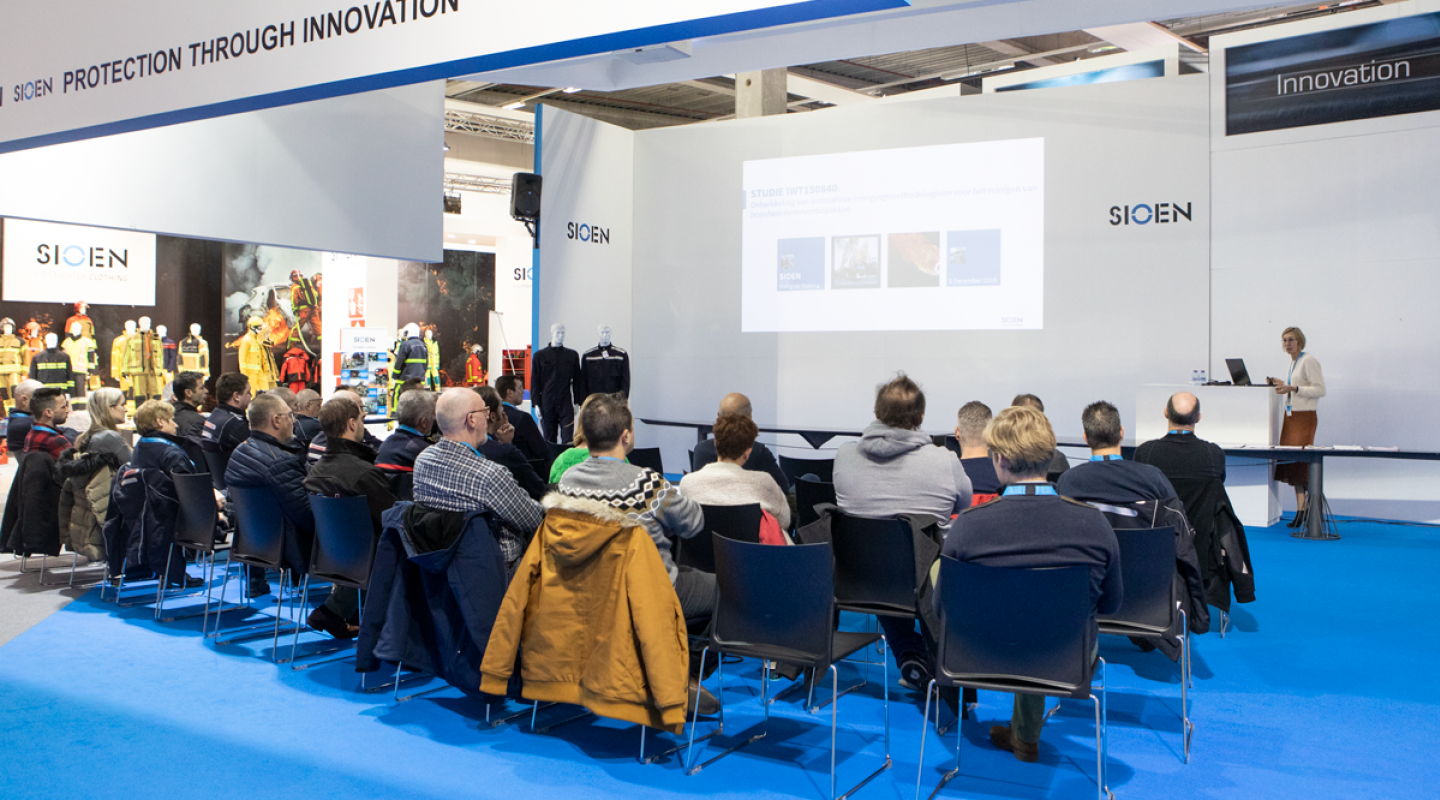Actively taking part
From those early days onwards, Sioen has always been involved in safety standards and standardisation. As a result, today we are active with various Sioen talents participating in working groups at a national (via Mirror comités, Febelsafe, Synamap, BSIF, etc.), European (EN standards, via the European Safety Federation, etc.) and at a global level (ISO, IMO, etc.). Our best textile engineers and chemists put their knowledge and expertise at the disposal of science and at the same time of the higher good: contributing to a safer society.
Deceuninck: "Depending on the study group, their role is advisory, actively participating, voting or sometimes even as project chair. Increasing the safety and comfort of the end user is always central. For example, Vera DeGlas, one of the people from my R&D team, project engineer and level 1 prevention advisor, is chairman of the CEN sub-study group on decontamination of firefighting clothing and/or the role of chemical repellent finishes. She knows this dossier like no other person. Before COVID-19, she flew around the world from Australia to Japan, the Middle East, USA, and in Europe to talk about this topic".
Why standards
Personal protective equipment (P.P.E.), of which firefighting clothing is a part, is subject to extensive national and international regulations. In each country they are managed by national standardisation bodies. These are national standards, European standards (EN) and international standards accepted in the country in question (ISO, IEC).
Deceuninck: "All firefighter garments on the European market must comply with the strict European standards (EN) that are independently inspected (CE) and manufactured by ISO 9001-certified companies and/or companies that are audited annually by an 'approved body' on the production of these P.P.E.'s".
A good thing, according to Deceuninck, because this is the only way to differentiate between quality products and less good products and to ensure protection for the wearer.
From a legal point of view, the standards have a near-regulatory status, and are the benchmark for monitoring compliance. At a technical level, these standards have become a reference; or at least a - substantiated - minimum specification (often with different classes of protection) which, however, must always be balanced with the user's risk analysis. They are of vital importance so that manufacturers do not simply put any firefighter suit on the market. They are used to assess conformity and are a tool for control bodies such as labour inspectorates and prevention advisers.
Deceuninck: "It certainly is complex and we can tell you a thing or two about it. So there's a specific standard for protective clothing for each type of hazard."
On all levels
Deceunick: "Our people are active in study groups, projects and consultative bodies at all levels all over the world and help as advisors to write new standards and interpret them on a national level. Our experts are recognised as pioneers in their field and are sought-after speakers in professional groups, universities and congresses".
Some of the bodies we are active in:
- CEN (Comité Européen de Normalisation) is a standardisation organisation that was established in 1961 by the national standardisation committees in the European Economic Community and the European Free Trade Association. CEN standards are known as the European Standard (EN).
- ISO (International Organisation for Standardisation) is an international organisation that sets standards. The organisation is an alliance of national standardisation organisations in 163 countries.
- In addition, there is always a national body dealing with standards and standardisation. In Belgium this is the NBN (Bureau voor Normalisatie), in the Netherlands the NEN (Nederlandse Norm), in France the BNITH, ....
Just know that there are many smart people at Sioen, working behind the scenes in every possible way to create the very best professional protective clothing.
In your interest
It costs a lot of money, takes an awful lot of time and energy, but to us, it's worth it. It makes us smarter, which results in top products.
Deceuninck: "As a company, this does indeed mean a great effort. Not only do we give our best people time and space to get involved in all those bodies, it is also in all corners of the world, which involves a lot of travel and accommodation costs. And while they are working for the greater good, they are not working for Sioen."
This allows us to modify our products long before a standard comes into force. In short, our products are constantly evolving and are ahead of what is to come.


